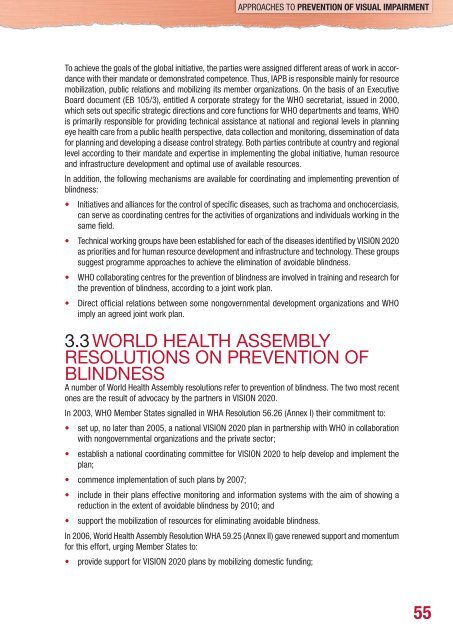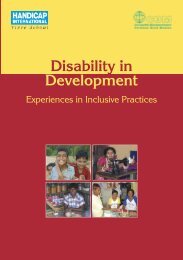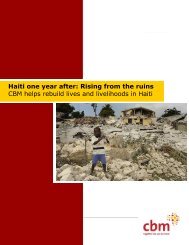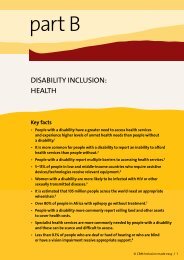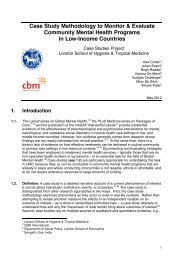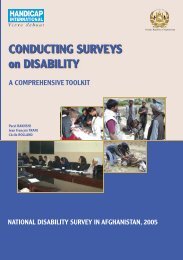Vision 2020 - World Health Organization
Vision 2020 - World Health Organization
Vision 2020 - World Health Organization
You also want an ePaper? Increase the reach of your titles
YUMPU automatically turns print PDFs into web optimized ePapers that Google loves.
APPROACHES TO PREVENTION OF VISUAL IMPAIRMENT<br />
To achieve the goals of the global initiative, the parties were assigned different areas of work in accordance<br />
with their mandate or demonstrated competence. Thus, IAPB is responsible mainly for resource<br />
mobilization, public relations and mobilizing its member organizations. On the basis of an Executive<br />
Board document (EB 105/3), entitled A corporate strategy for the WHO secretariat, issued in 2000,<br />
which sets out specifi c strategic directions and core functions for WHO departments and teams, WHO<br />
is primarily responsible for providing technical assistance at national and regional levels in planning<br />
eye health care from a public health perspective, data collection and monitoring, dissemination of data<br />
for planning and developing a disease control strategy. Both parties contribute at country and regional<br />
level according to their mandate and expertise in implementing the global initiative, human resource<br />
and infrastructure development and optimal use of available resources.<br />
In addition, the following mechanisms are available for coordinating and implementing prevention of<br />
blindness:<br />
• Initiatives and alliances for the control of specifi c diseases, such as trachoma and onchocerciasis,<br />
can serve as coordinating centres for the activities of organizations and individuals working in the<br />
same fi eld.<br />
• Technical working groups have been established for each of the diseases identifi ed by VISION <strong>2020</strong><br />
as priorities and for human resource development and infrastructure and technology. These groups<br />
suggest programme approaches to achieve the elimination of avoidable blindness.<br />
• WHO collaborating centres for the prevention of blindness are involved in training and research for<br />
the prevention of blindness, according to a joint work plan.<br />
• Direct offi cial relations between some nongovernmental development organizations and WHO<br />
imply an agreed joint work plan.<br />
3.3 WORLD HEALTH ASSEMBLY<br />
RESOLUTIONS ON PREVENTION OF<br />
BLINDNESS<br />
A number of <strong>World</strong> <strong>Health</strong> Assembly resolutions refer to prevention of blindness. The two most recent<br />
ones are the result of advocacy by the partners in VISION <strong>2020</strong>.<br />
In 2003, WHO Member States signalled in WHA Resolution 56.26 (Annex I) their commitment to:<br />
• set up, no later than 2005, a national VISION <strong>2020</strong> plan in partnership with WHO in collaboration<br />
with nongovernmental organizations and the private sector;<br />
• establish a national coordinating committee for VISION <strong>2020</strong> to help develop and implement the<br />
plan;<br />
• commence implementation of such plans by 2007;<br />
• include in their plans effective monitoring and information systems with the aim of showing a<br />
reduction in the extent of avoidable blindness by 2010; and<br />
• support the mobilization of resources for eliminating avoidable blindness.<br />
In 2006, <strong>World</strong> <strong>Health</strong> Assembly Resolution WHA 59.25 (Annex II) gave renewed support and momentum<br />
for this effort, urging Member States to:<br />
• provide support for VISION <strong>2020</strong> plans by mobilizing domestic funding;<br />
55


